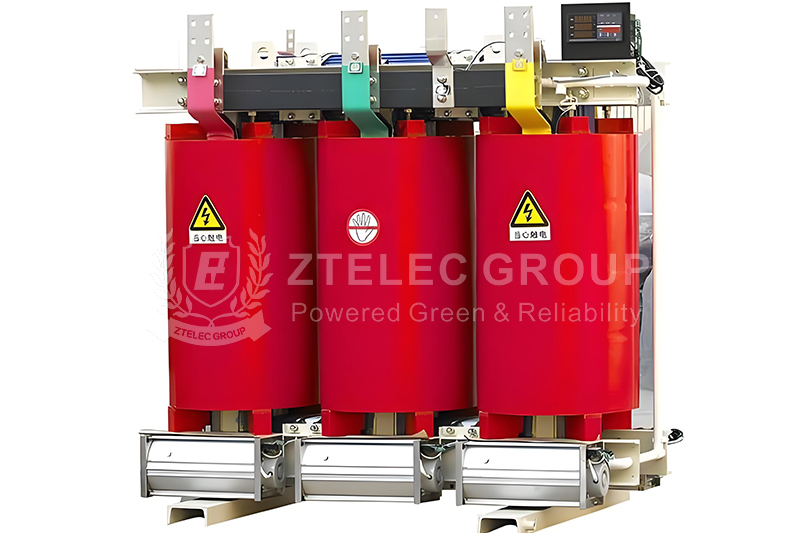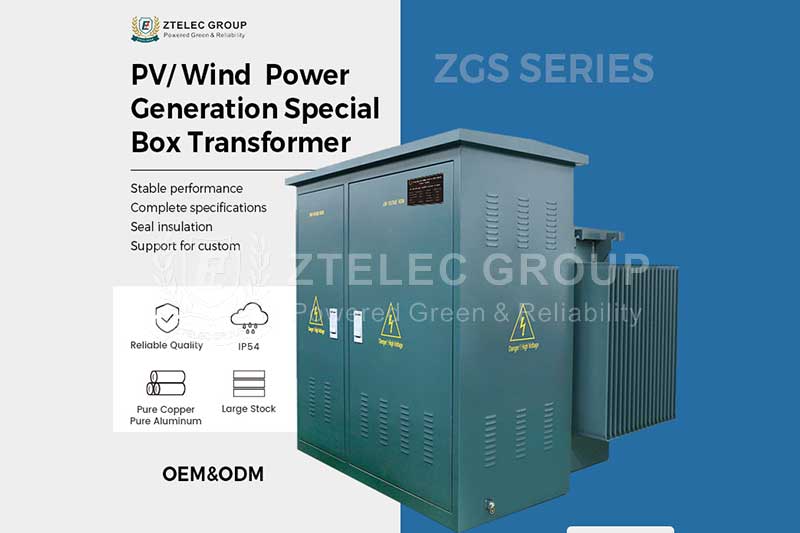Working efficiency of dry-type transformers
Time:2025-04-7 Auther:ZTelec-www.ztelectransformer.com
The working efficiency of dry-type transformers is often referred to as efficiency (η). It is reflected as the ratio of output power (P₂) to input power (P₁) and usually expressed as a percentage. The calculation formula is: η = (P₂ / P₁) × 100%. Input power is the power obtained by the transformer from the power supply; output power is the power delivered by the transformer to the load. In theory, the input power of the transformer is equal to the output power under ideal conditions. However, in reality, due to the copper loss (Pcu) and iron loss (Pfe) inside the transformer, the input power is always greater than the output power.

Main factors affecting the efficiency of dry-type transformers
1. Load conditions
The load level of the transformer also affects the efficiency. When it is lightly loaded or unloaded, the transformer efficiency will decrease due to relatively high iron loss and low copper loss. When the load reaches the rated value, the transformer efficiency usually reaches the peak. When overloaded, although the copper loss increases, the power efficiency may still be high. However, if it is in an overloaded operation state for a long time, the equipment is very likely to overheat, which will affect its service life.
2. Iron loss and copper loss
During the operation of dry-type transformers, iron loss and copper loss have a significant impact on their efficiency. Iron loss mainly comes from the magnetic core of the transformer. Iron loss is mostly generated when it is unloaded, which is mainly caused by eddy current and hysteresis loss caused by alternating magnetic field. In contrast, copper loss occurs under loading conditions. It is mainly caused by winding current, and is calculated according to the I²R law.
3. Environmental factors
Environmental factors such as temperature and humidity will also affect the efficiency of dry-type transformers. In a high temperature environment, once the ambient temperature exceeds the range that the transformer can withstand, its service life will be shortened and its efficiency will decrease.

Methods to improve the working efficiency of dry-type transformers
1. Improve the manufacturing process
Improve the manufacturing process level of the transformer to ensure that the core is tightly stacked and the winding is regular, reducing leakage and stray losses. At the same time, select high-quality insulation materials to enhance the insulation performance of the transformer and reduce partial discharge losses.
2. Reasonable load selection
According to actual needs, the capacity of the transformer should be reasonably selected to prevent the transformer from being in a light-load or overloaded operating state for a long time. In actual use, the load condition of the transformer can be monitored and the load distribution can be reasonably adjusted so that the transformer operates in the high-efficiency range as much as possible.
3. Optimized design
In the transformer design process, advanced electromagnetic design solutions are used to reasonably select the core material and the cross-sectional area of the winding wire to reduce iron loss and copper loss. For example, the use of a rolled core structure can effectively reduce magnetic resistance and reduce iron loss.
4. Strengthen heat dissipation management
Install efficient heat dissipation devices, such as fans, heat sinks, etc., to dissipate the heat generated by the transformer in a timely manner. This can reduce the operating temperature of the transformer and reduce the loss caused by the temperature increase.




